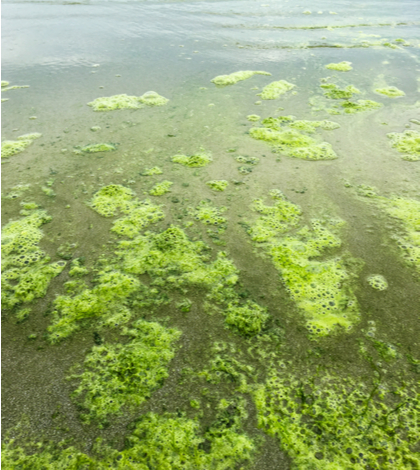Summertime for managers of California’s lakes and reservoirs means an awareness of and testing for cyanobacteria, also known of as harmful blue-green algae. Case in point is the most recent warning by the Kern County Public Health Services Department cautioning those visiting Lake Isabella to use caution to avoid recently identified cyanobacteria. Summer in California is marked by the identification of dozens of outbreaks of the harmful blue-green algae which are rated on a three-point trigger scale of caution, warning and danger depending on the level of toxin within each water sample.
Until now outbreaks of cyanobacteria have been identified by the collection of water samples from various sites in a body of water and then sent for laboratory analysis. Although satellite data have been available for many years, it has not typically been used in decision-making because of the complicated data formats and the time burden it took to process and access the data.
The U.S. Environmental Protection Agency (EPA) recently released the Cyanobacteria Assessment Network (CyAN) mobile application, a tool that uses satellite data to alert users that a harmful algal bloom could be forming based on specific changes in the color of the water in more than 2,000 of the largest lakes and reservoirs across the United States. The EPA has partnered with the National Aeronautics Space Administration (NASA), the National Oceanic and Atmospheric Administration (NOAA) and the U.S. Geological Survey (USGS) to develop this early warning system using historical and current satellite data to help water managers and people swimming, fishing, or boating in lakes more quickly identify when there may be a bloom forming and avoid any potential health impacts to people, pets, livestock or the environment.
“This mobile app is an important tool going into the summer months to help states and local communities track and manage harmful algal blooms,” said EPA Principal Deputy Assistant Administrator for Science for the Office of Research and Development and EPA Science Advisor Jennifer Orme-Zavaleta. “The most effective way of protecting people, pets, and livestock from the impacts of harmful algal blooms is knowing ahead of time to avoid water containing cyanobacteria. EPA is focused on providing communities with tools like this that can make water quality monitoring easier and more efficient.”
Cyanobacteria occur naturally in many bodies of water across the country and inn small numbers, these algae are not a problem. But when cyanobacteria multiply, they can form potentially toxic harmful algal blooms (or HABs).
As developed by the EPA and its project partners, the CyAN app gives users the ability to easily assess satellite derived cyanobacteria biomass concentrations occurring over larger lakes and reservoirs across the country. This app reduces the need for scientific expertise in satellite data processing, analysis and interpretation. It eliminates barriers to computer hardware requirements associated with the use of satellite data files.
This easy-to-use, customizable interface allows users to rapidly distill critical water quality information for their communities. The CyAN App is available for download in the Google Play™ store for Android™ devices at: https://play.google.com/store/apps/details?id=com.topcoder.epa.
 California Water News Daily Your Source For Water News in California
California Water News Daily Your Source For Water News in California


